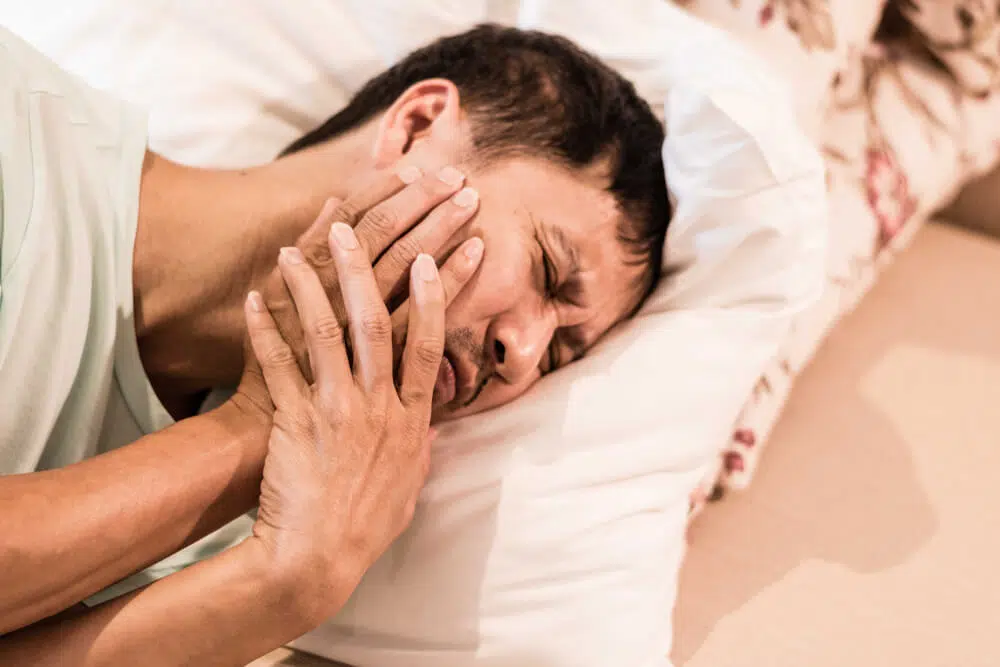
TMJ is a common term often used when someone experiences jaw pain, but what exactly is it, and what does TMJ dysfunction treatment in Knoxville involve?
The TMJ or temporomandibular joint is one of, if not the most used joints in the body. As the name implies, it is where the temporal bone of the skull and the mandible, or jawbone, articulate.
At rest, the mandible sits in a little groove in the temporal bone called the mandibular fossa which is cushioned by disc tissue. Whenever we depress our jaw or open our mouth, the mandible is supposed to smoothly glide out of the fossa and over the disc tissue. However, this is not always the case considering it is estimated that about 10 million or more Americans struggle with TMJ-related pain or dysfunction per year, and tends to be more common in women than men.
Several contributing factors include psychological stress, emotional disturbances, muscle imbalances, sleep bruxism (teeth grinding or clenching), and trigger points in the surrounding musculature. Because TMJ dysfunction is typically multifactorial, TMJ dysfunction treatment in Knoxville must be customized to address each individual’s unique combination of causes.
There are many ways to treat TMJ dysfunction depending upon the associated factors such as therapeutic exercise, manual therapy, patient education, stress management, counseling, and correction of faulty bite (malocclusion).
Chiropractic care and physical therapy are often great starting points for TMJ dysfunction treatment in Knoxville. At Knoxville Spine & Sports, our process begins with a comprehensive assessment—taking a detailed health history, evaluating jaw movement, and palpating the muscles surrounding the TMJ and cervical spine.
Key jaw motions (like depression, elevation, protraction, retraction, and lateral deviation) are evaluated to identify muscle imbalances. For example, deviation to the left during jaw opening may suggest tension or spasms in specific muscles like the masseter or temporalis.
Postural issues can also contribute to TMJ dysfunction, as neck musculature plays a major role in jaw function. That’s why our treatment approach includes soft tissue mobilization, TMJ manipulation or mobilization, education on habits that may worsen symptoms, and exercises to improve both posture and jaw mechanics.

To support long-term relief following TMJ dysfunction treatment in Knoxville, patients are encouraged to adopt jaw-friendly habits, such as:
Due to the high incidence of TMJ problems, you or someone you know may be experiencing this complaint. Please consider consulting a chiropractor or physical therapist about your concerns and how they can aid you in healing.
With over 15+ years of experience, Knoxville Spine & Sports has the expertise to alleviate your pain to get you to optimal health and peak performance. We specialize in various therapies, techniques, and treatment options including chiropractic, physical therapy, dry needling, strengthening & corrective exercises, and more. Call our office today at (865) 229-8796 to book an appointment for TMJ Dysfunction treatment.
8029 Ray Mears Blvd, Suite 300
Knoxville, TN
37919
Phone: 865-337-5574
Monday
7am-12pm & 1pm-6pm
Tuesday
7am-12pm & 1pm-4pm
Wednesday
7am-1pm
Thursday
7am-12pm & 1pm-6pm
Friday
7am-12pm & 1pm-4pm
Saturday & Sunday
Closed